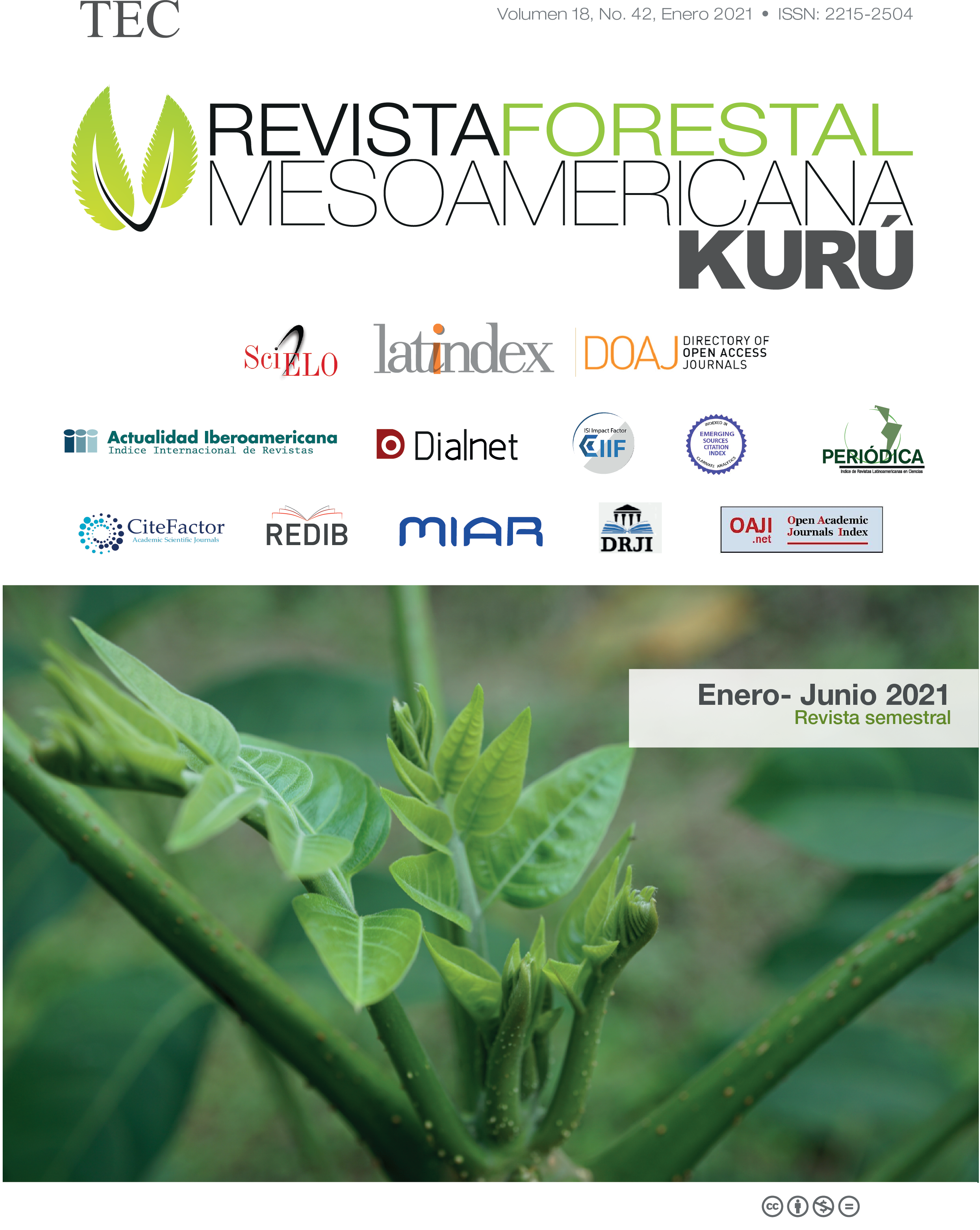Review of pests and diseases in forest nurseries in Costa Rica
Main Article Content
Abstract
Forest nurseries are the sites of intensive plant production for reforestation and arboriculture programs, which must be of high quality and free from pests and diseases. A sanitary evaluation was carried out in seven forest nurseries in Costa Rica, to prepare the diagnosis of phytosanitary problems. 15 species of insects were diagnosed, 44 of pathogens and 5 of mites, in a total of 80 forest species under production. At the apex, the most important damages are caused by the borer Hypsipila grandella and the cutter Trigona sp. and as pathogens Botrytis sp., Cylindrocladium sp. and Phomopsis sp.; in the foliage, by the insects Eulepte concordalis, Dictyla monotropidia and Austropuccinia psidii, Colletotrichum spp., Dothistroma septosporum, Melampsoridium alni, Oidium sp., Olivea tectonae, and Phyllachora balansae as pathogens. These problems are described and the principles and practices contemplated in Integrated Pest Management (IPM) are recommended for their control.
Article Details

This work is licensed under a Creative Commons Attribution-NonCommercial-NoDerivatives 4.0 International License.
Al enviar un artículo a la Revista Forestal Mesoamericana kurú (RFMK), los autores ceden los derechos patrimoniales a la editorial de la RFMK una vez su manuscrito haya sido aprobado para publicación, autorizando a la RFMK a editarlo, reproducirlo, distribuirlo, y publicarlo en formato físico y/o electrónico, incluido Internet. La titularidad de los derechos morales sobre los trabajos objeto de esta cesión seguirá perteneciendo a los autores.
Este obra está bajo una Licencia Creative Commons Atribución-NoComercial-SinDerivadas 4.0 Unported.


